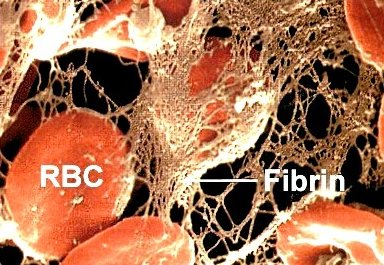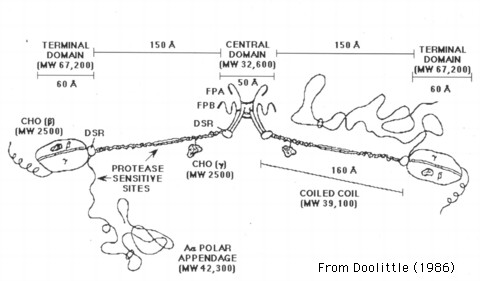fibrin

Figure 1. Red blood cells trapped by fibrin.

Figure 2. Fibrinogen.
Fibrin is an insoluble, fibrous protein that is essential to blood clotting (Figure 1). Developed in the blood from a soluble protein, fibrinogen, fibrin is laid down at the site of a wound in the form of a mesh, which then dries and hardens so that the bleeding stops.
In addition to the coagulation system, blood contains a fibrinolytic (fibrin break-down) system, the end-product of which is an enzyme called plasmin, formed from a precursor called plasminogen. Plasmin acts directly to break down fibrin filaments and dissolve clots in a process by fibrinolysis.
The fibrinolytic system is activated in parallel with the coagulation system when a blood vessel is damaged. It helps restrain clot formation in blood vessels (thus helping to prevent clots from blocking blood vessels) and eventually dissolves a clot once a broken blood vessel has healed. Thrombosis (abnormal clot formation) only occurs if there is a disturbance in the balance between mechanisms that promote clot formation, such as sluggish blood flow, and those, such as fibrinolysis, that restrain clot formation or dissolve blood clots.
Fibrinogen
Fibrinogen is a soluble protein, a coagulation factor, synthesized by the liver and released into the bloodstream (Figure 2). It is converted to fibrin by thrombin (an enzyme) in the final stage of the blood clotting process. The normal level of fibrinogen in the blood plasma 2–4 grams per liter (4–6 grams per liter during pregnancy).


